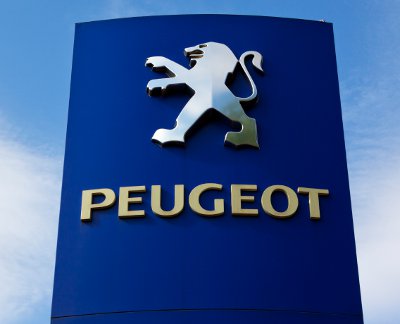Peugeot Car
Category: Automotive History

History and facts about Peugeot Automobiles. The Peugeot Car is a product of the French automobile manufacturer, the PSA Peugeot Citroën. The automotive products of the business include commercial vehicles, automobiles and luxury sedans. Peugeot emerged as a coffee mill business during 1810, as a bicycle producer in 1830, as a car maker during 1882, as a motorcycle business in 1898 and functioned as a separate corporation since 1926.
Peugeot Automobile History and Information
The family company that led the existing Peugeot Company was established during 1810. On 20th of November 1858, Emile Peugeot applied for the lion trade name, and Armand Peugeot constructed the first car of the business, an undependable steam tricycle, in partnership with Leon Serpollet during 1889, which was followed by an internal combustion vehicle during 1890.
Armand Peugeot became concerned with the vehicle early, following a meeting with Gottlieb Daimler, who was an industrialist, engineer and industrial designer, and others, was persuaded of its feasibility. The initial Peugeot vehicle, which was a three-wheeled, steam-motorized sedan, designed by Léon Serpollet, who was a pioneer of steam vehicles and a French industrialist, was manufactured in 1889. During that time, only four automobiles were manufactured.
During 1890, after meeting Émile Levassor, who was an engineer from France and a pioneer of car racing and the automobile business in France, and Gottlieb Daimler, steam was discarded in support of a four-wheeled automobile with a gasoline-fuelled internal ignition engine, constructed by Panhard, a French producer of light planned and military automobiles, under Daimler license. The automobile was more refined than several of its generation, amid a sliding-gear transmission and a three-point suspension.
More automobiles followed, 29 being constructed during 1892, 40 during 1894, 72 during 1895, 156 during 1898, and 300 during 1899. These early mock-ups were provided with Type numbers, dating from 1895. Peugeot has turned out to be the first producer to fix rubber tires to a petrol-motorized vehicle that year.
The first Peugeot engines were constructed in 1896, which were no longer dependent on Daimler. Owing to a family dispute, Armand Peugeot left the business, and established the Société des Automobiles Peugeot in 1896. During 1899, 300 numbers of cars were sold and the total vehicle sales throughout France were 1200 during that year.
By the year 1903, the business manufactured half of the automobiles constructed in France, looking like the modern Mercedes mock-ups.
In 1907, Peugeot introduced the first six-cylinder Salon, and in 1910, the product line of the business incorporated a 2-cylinder and 4-cylinder vehicles. Additionally, a new plant opened during the same year at Sochaux that became the major plant during 1928.
During the World War I, Peugeot concentrated largely on arms manufacture, becoming a key producer of arms and military automobiles, ranging from bicycles to shells and tanks.
The Peugeot 201 was the new vehicle for the year 1929, which was the cheapest automobile on the French automotive market, and the first vehicle to use the later Peugeot brand. The 201 model would acquire self-governing front suspension during 1931. Soon after the Depression hit, the sales of Peugeot cars were decreased, but the business survived.
From 1932 to 2011, the sales of the Peugeot automobiles were not up to the mark, in spite of several modifications and the introduction of different models.
During March 2012, a 7% share of the Peugeot was purchased by General Motors for 320 million Euros as part of collaboration, aimed at finding investments through mutual purchasing and product growth. During December 2013, General Motors sold its whole Peugeot share, assuming a loss of 70 million Euros.
During October 2013, the manufacturing plant of Peugeot at Aulnay-sous-Bois was closed as part of a reorganization plan to lessen overcapacity in the face of a reduction of the domestic market.
All Facts are based on our research, always check lookseek facts in case of any errors. Lookseek is not responsible for any mistakes in this article.

 Back To Category Automotive History
Back To Category Automotive History